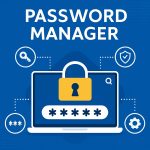Employee Efficiency: How to Get the Best Out of Every Workday
Every business owner knows time is money. But when the average employee admits to losing more than two hours of productivity each day, those wasted minutes quickly add up to lost opportunities and reduced profit. While nobody can be productive 100 percent of the time, improving employee efficiency can dramatically change how much value your team creates during the day.
For most organisations, the goal isn’t about pushing people to work harder — it’s about helping them work smarter.
Why Employee Efficiency Matters
Employee efficiency goes beyond simple time management. It’s about how effectively your people convert effort into measurable results. When workflows are smooth, communication is clear, and distractions are limited, employees can achieve more in less time and with less frustration.
Efficient teams deliver projects faster, collaborate better, and are more engaged in their work. For small and mid-sized businesses in New Zealand, that can mean significant savings in overheads and improved customer satisfaction.
Whether you manage a hybrid workforce or an in-office team, developing consistency and focus is essential for growth.
Common Productivity Killers in the Workplace
Most business leaders underestimate the hidden costs of workplace distractions. The following four time-wasters are among the biggest barriers to employee efficiency — and they’re often easy to fix once recognised.
1. Email Overload
Email is still one of the most used business communication tools, but it can also become a black hole for time. Between constant notifications and the pressure to respond instantly, it’s easy to lose focus on deep work.
Studies show employees spend roughly 28 percent of their week managing emails — often jumping between tasks dozens of times per hour.
Practical fixes:
-
Encourage staff to check emails at set times rather than constantly throughout the day.
-
Turn off desktop notifications for periods of focused work.
-
Use collaborative tools such as Microsoft Teams or Slack for quick updates instead of long email chains.
These small changes help restore control over the workday and boost overall employee efficiency.
2. Online Distractions
Social media, news alerts, and personal browsing are more tempting than ever — especially when everyone works online. Research suggests that nearly two-thirds of YouTube viewing during weekdays happens between 9 a.m. and 5 p.m.
Practical fixes:
-
Introduce structured breaks so staff can check personal accounts guilt-free.
-
Use productivity apps or browser extensions to limit time spent on non-work sites.
-
Where necessary, configure your network’s security settings to block high-distraction sites during business hours.
Clear boundaries create better balance. People can enjoy personal time without it eating into productive hours, preserving both morale and focus.
3. The Chatty Colleague
Collaboration is vital, but constant interruptions are costly. Frequent “quick questions” can fragment attention and cause task-switching fatigue — reducing concentration and quality.
Practical fixes:
-
Encourage “focus hours” each day where everyone avoids non-urgent conversations.
-
Use headphones as a polite signal that someone is concentrating.
-
Establish internal communication guidelines about when to message, email, or meet in person.
Reducing interruptions helps teams stay in the zone longer, increasing output without adding stress.
4. Meeting Overload
Few things drain productivity faster than unnecessary meetings. While collaboration is essential, many meetings lack a clear purpose or agenda. Professionals report spending up to 15 hours per week in meetings — and many feel half that time is wasted.
Practical fixes:
-
Limit meetings to 30 minutes where possible.
-
Share written agendas beforehand so participants can prepare.
-
Ask whether the meeting could be replaced with an email summary or a short call instead.
-
Review recurring meetings regularly to ensure they’re still relevant.
Fewer, better-planned meetings give employees more uninterrupted time to focus on core work.
Technology and the Modern Workplace
As workplaces adopt more digital tools, there’s a constant balance between flexibility and distraction. Technology should enable productivity, not overwhelm it.
Cloud collaboration, mobile apps, and automated workflows can drastically improve employee efficiency — but only if managed correctly. Systems that are slow, redundant, or poorly integrated often have the opposite effect.
Partnering with a technology specialist like Exodesk ensures your IT infrastructure supports efficiency rather than hinders it. With reliable systems, fast connectivity, and strong cybersecurity, employees can perform their best work wherever they are.
Leadership’s Role in Driving Efficiency
Culture is a powerful force in shaping how teams work. Leaders who prioritise trust, autonomy, and accountability tend to inspire more efficient performance than those who rely on constant supervision.
Key principles for leaders:
-
Set clear goals: Everyone should understand what success looks like for their role.
-
Recognise achievements: Acknowledging progress keeps motivation high.
-
Provide tools and training: Don’t let outdated software or unclear processes hold people back.
-
Model good habits: If management avoids after-hours emails, employees are more likely to respect healthy boundaries.
A positive culture empowers teams to self-manage, which naturally improves employee efficiency across the organisation.
Practical Ways to Improve Employee Efficiency
Improving performance doesn’t happen by accident. Here are some actionable methods that deliver measurable results in most workplaces:
-
Automate repetitive tasks. Reduce manual admin with workflow automation and smart tools.
-
Clarify priorities. Use digital task boards or project-management software to align teams.
-
Encourage continuous learning. Training keeps employees capable, confident, and adaptable.
-
Provide the right technology. Slow systems cost time; reliable infrastructure saves it.
-
Foster collaboration. Use shared platforms for communication and project tracking.
-
Promote wellbeing. Healthy, rested employees are naturally more productive.
-
Review workloads regularly. Adjust tasks before burnout sets in.
-
Create flexible work options. Trust employees to manage their schedules effectively.
Each initiative may seem small, but together they form a consistent, supportive environment that nurtures performance and innovation.
Strategies to Build a More Effective Workforce
Businesses looking for strategies to enhance workforce performance must start with clarity. Every process, from onboarding to performance reviews, should reinforce the same goals: focus, accountability, and communication.
Data plays a critical role here. To measure workforce efficiency accurately, managers must track meaningful metrics such as project completion times, client satisfaction, and resource utilisation. When analysed regularly, these insights highlight where improvements are needed most.
Understanding workforce efficiency in a firm also helps leaders make better decisions about resourcing, training, and technology investment. It reveals which departments are thriving and which may need additional support to meet business objectives.
The Future of Employee Efficiency
Workplace expectations continue to evolve. As hybrid and remote work models become standard, efficiency depends less on physical presence and more on output.
Businesses must adapt by providing clear goals, smart tools, and strong digital frameworks that allow employees to perform from anywhere. A managed IT environment, automated systems, and strong cybersecurity ensure work stays consistent regardless of location.
Ultimately, improving employee efficiency is an ongoing process. The best results come from combining technology, leadership, and human motivation into a unified strategy. Let’s talk — or connect with us on LinkedIn to keep up with more insights.
Frequently Asked Questions
1. What does employee efficiency mean?
It refers to how effectively an employee converts their time and effort into productive results. High efficiency means completing tasks accurately and quickly without unnecessary delays.
2. How can technology improve efficiency?
Reliable IT systems, automation tools, and collaborative platforms reduce time-wasting tasks and enable smoother communication, helping teams stay productive.
3. What are the biggest barriers to efficiency in the workplace?
Common barriers include poor communication, excessive meetings, unclear goals, outdated technology, and frequent distractions.
4. How can management encourage higher performance?
By setting clear objectives, providing recognition, supporting professional development, and modelling productive behaviours, leaders can cultivate a more efficient team.
5. How often should employee efficiency be reviewed?
Regularly — ideally every quarter. Frequent reviews allow adjustments before productivity drops or burnout occurs.
6. Is remote work affecting efficiency?
Yes, but not necessarily negatively. With the right digital tools and structure, remote and hybrid teams can be as efficient — or even more so — than traditional office setups.
7. Can monitoring software improve performance?
Only when used ethically. Transparency about goals and expectations matters more than surveillance. The aim should be to support productivity, not control it.
8. What role does company culture play in efficiency?
A supportive culture encourages trust, accountability, and communication — all key to sustained productivity. Toxic or micromanaged environments have the opposite effect.
9. How can Exodesk help improve workplace productivity?
Exodesk provides managed IT solutions that streamline communication, optimise technology, and protect systems, allowing employees to focus on meaningful work.
10. What’s the first step to improving employee efficiency?
Start with an audit of workflows and tools. Identify bottlenecks, set measurable goals, and provide the right resources to enable consistent improvement.


